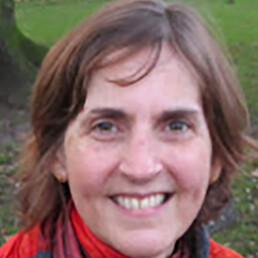
Written by Kathryn Kashyap
Teachers often ask how they can approach the learning of pupils who are designated with more than one “label”- for example EAL, SEND and “disadvantaged”. Looking at how to recognise and create “possibility” with all pupils in the spaces where they learn takes the focus away from within-child deficit views. Instead, it makes us look at our practice and listen to our pupils about what works for them. Here I set out how this idea of “possible spaces” can help us address the complexity of diversity.
Firstly, it’s important to interrogate the labels that are being used, challenging negative assumptions around race, gender, class and disability. On further investigation, we find that pupils’ learner identities are far more complex than “just” EAL, SEND and disadvantaged. It’s important to understand which black, Asian or other minoritised ethnic background they are from, and which (if any) religion they follow. Some families may be dealing with the trauma of fleeing from war or persecution. Their family may be living in a working-class context, but from a different socio-economic status in their home country. Post-migration, they may be facing significant challenges. There are also in-depth questions to consider about the aspects of SEND that teachers have identified or are suggesting might be present. Alongside this we need to understand how academic English language acquisition, multilingual learning and for some the impact of disrupted formal education, both in the UK and prior to arrival, can be supported.
Then, we need to talk with the children and young people we are teaching. For my research, I asked a group of Somali young people who had migrated to the UK, and who were considered to need extra support (whether due to EAL, SEND, disadvantage or “underachieving”), where they felt they learnt best, with whom and why. What came across very powerfully was their frustration and for some their anger about how they were often treated as “behind” or even as “unable”. Their knowledge and experiences were ignored within a monolingual, mono-cultural curriculum. Their needs were side-lined or only met partially. Their hopes for making progress were squashed by systems that held them back.
These young people pushed back forcefully. They sought out spaces, both formal and informal, where they could learn, with teachers, mentors or peers who recognised their skills and knowledge, who believed in their potential, cared about their wellbeing and could advocate for them. Often this was about building confidence. Teachers asked the pupils what they knew rather than assuming they didn’t. They used talk, not reading as a way into learning. They drew on their strengths whilst supporting specific aspects. They challenged them and expected them to aim high.
Where these possible spaces existed was not clear cut, however. A lesson could be successful one week and not the next, or a session could shift moment by moment. This could be due to the teaching strategies being used. It could be that the topic was seen as especially difficult or irrelevant, or the pressure to get through the curriculum felt overwhelming. The pupil might be sitting next to a supportive peer one lesson and moved the next.
Acceptance was also a vital aspect of possible spaces. Managing to study and gain the help they wanted without being seen as a “neek”, whilst resisting being seen as unable, was complex. Bending the class rules, but just enough to get a small warning from their supportive teacher. Being the class joker to cover over difficulties with written literacy (but at the same time giving their peers great ideas for their story). “Forgetting” homework when they couldn’t access it. Copying surreptitiously from a neighbour. Arriving late for a lesson which they felt even before they began was going to be a failure due to lack of appropriate support. All tactics which could be interpreted as the pupil being disruptive or disinterested in learning, when in fact they were anything but. Asking “why” in these situations was key to unlocking possibility.
The idea of possible spaces is that it cuts across the anxiety that many of us have as teachers that there are strategies “out there” where pupils are labelled in more than one “category” that no one has told us about that, if we knew them, would solve the problem. It focuses on deepening our relationship with the pupil, looking at what works for them and replicating this across the curriculum. It draws on their knowledge, skills and interests and puts them at the centre not the margins of our planning. It reminds us that when they or we have an unsuccessful lesson, we can look outward at what was happening in the learning space, not inward at deficit or failure. And usefully, given the turn to tuition in the government’s “catch up” strategy, it emphasizes the importance of all mainstream lessons being “possible” spaces.

